Desert
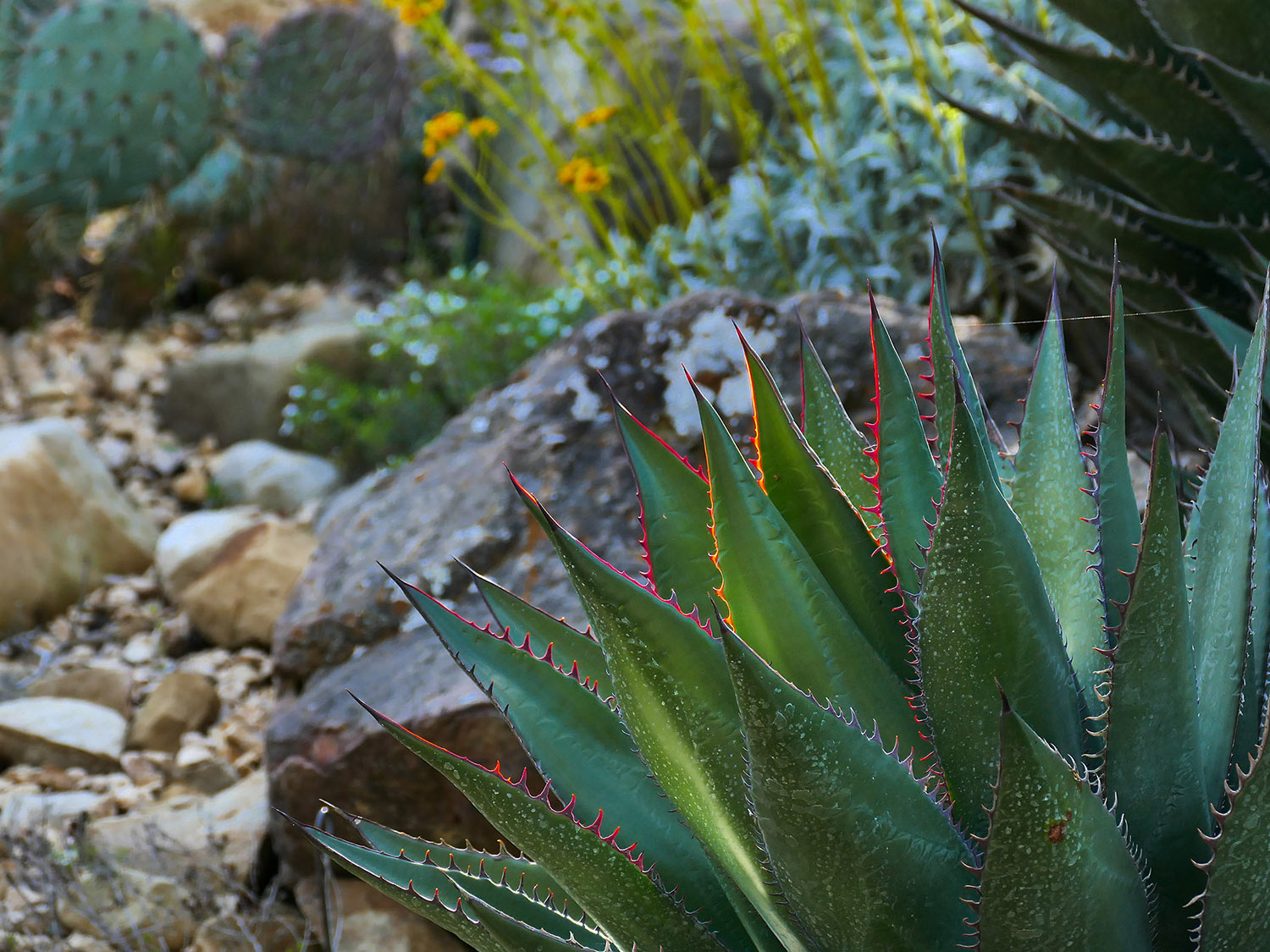
California’s Old West
Introducing the Lush Desert
Rather than represent a single desert habitat, Santa Barbara Botanic Garden’s Desert Section displays plants from across the varied deserts of eastern California. These deserts all share a harsh environment with little rainfall, lots of sun, and strong winds. These conditions have created unique plants found nowhere else in the state. Many of the plants in this section come from two of the most iconic deserts in the world: the Mojave and the Sonoran.

Noteworthy Plants
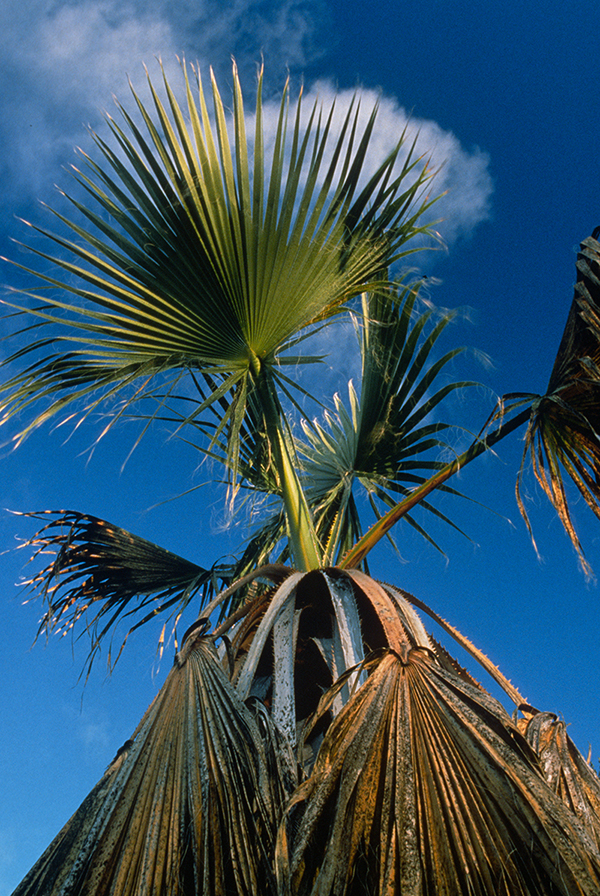
California fan palm
Washingtonia filifera
This is California’s only native species of palm, found in oases. It’s a vital species that provides food, shade, and homes for many desert animals.
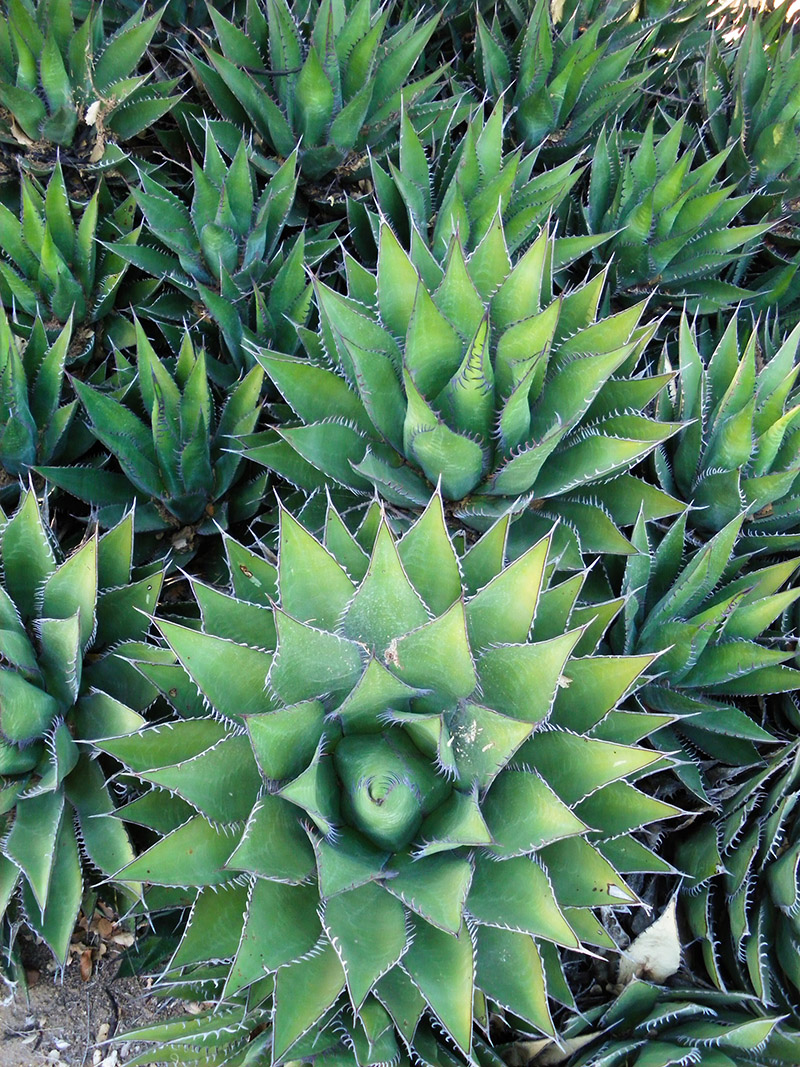
Shaw’s agave
Agave shawii
One of the rarest plants in California, Shaw’s agave has two remaining populations in the state. Although it has been all but eliminated here, populations persist in Mexico.
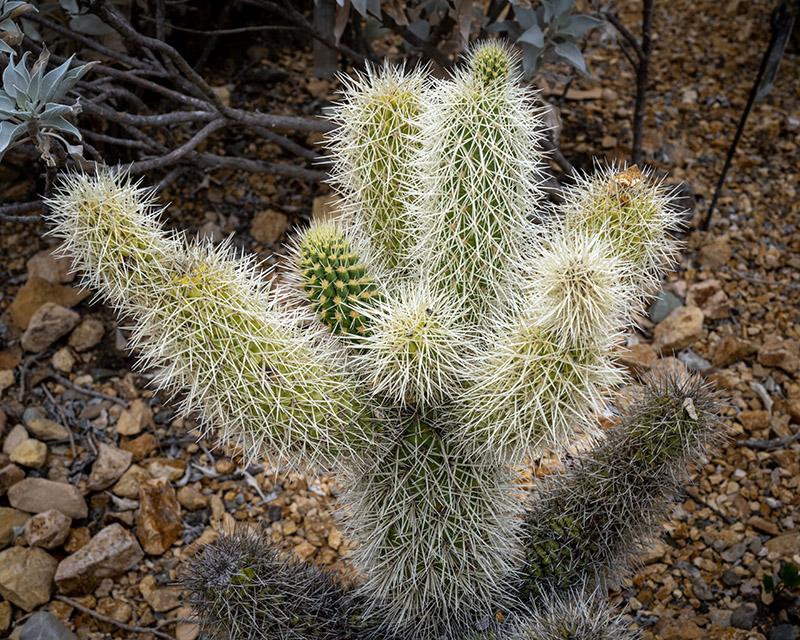
Teddybear cholla
Cylindropuntia bigelovii
Native to the Mojave and Sonoran deserts, these cacti provide spiny homes for species like the Cactus Wren and pack rat.
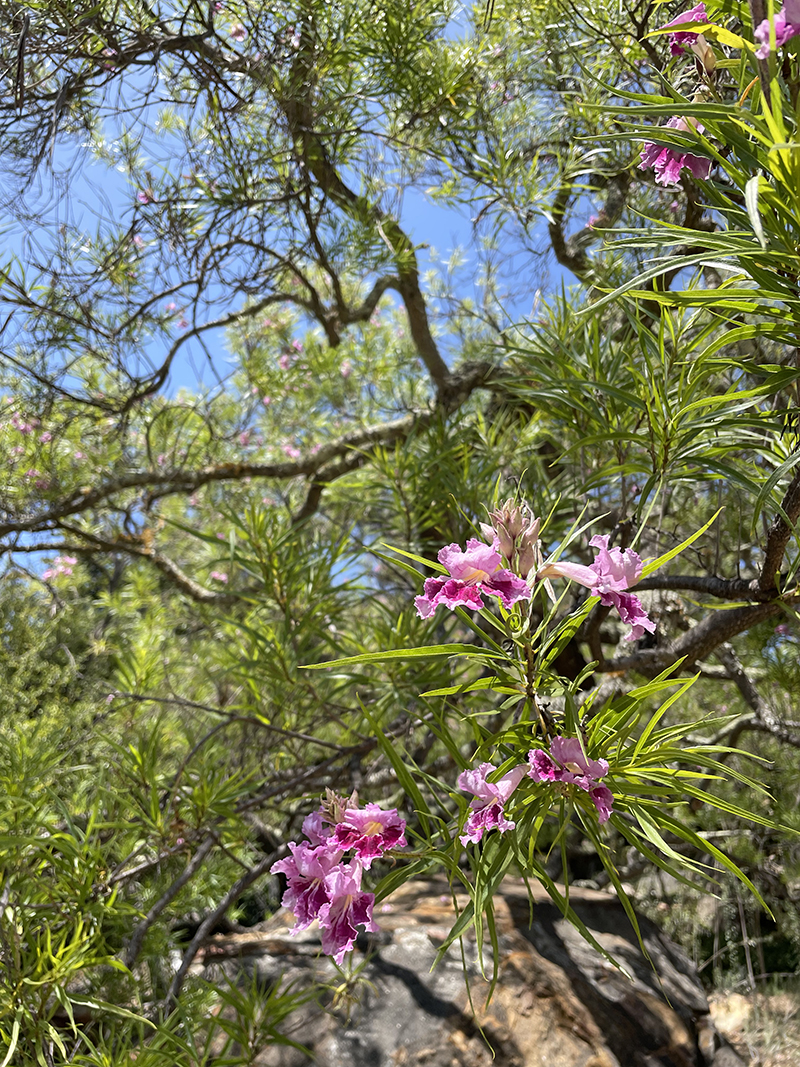
Desert willow
Chilopsis linearis
With stunningly huge flowers and beautiful willow-like leaves, this species is a wonderful sight in the spring and summer.
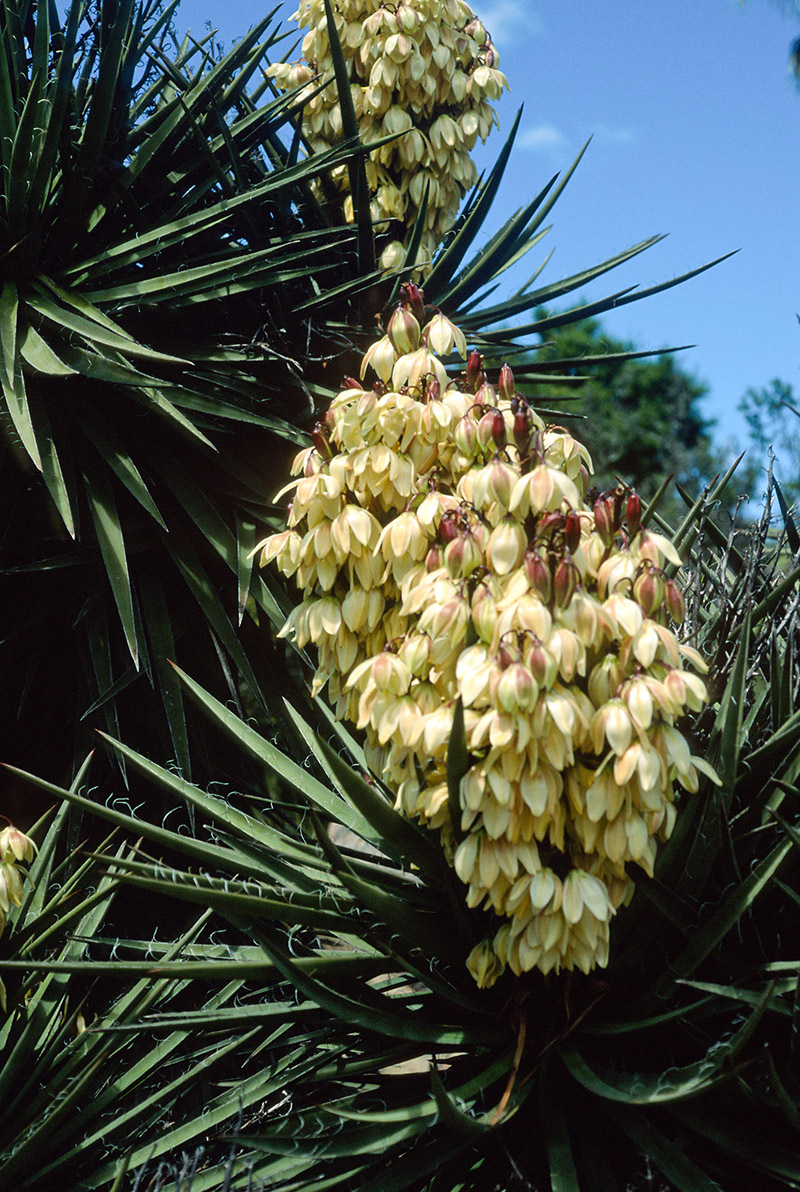
Mojave yucca
Yucca schidigera
This yucca is common throughout the deserts of eastern California. Like its close relatives the Joshua tree (Yucca brevifolia) and the banana yucca (Yucca baccata), the Mojave yucca is pollinated by a single species of yucca moth (Tegeticula spp.).
Seasonality
Born To Be Tough
California’s deserts range from thousands of feet (upwards of 1,000 meters) above sea level to 280 feet (85 meters) below and receive anywhere from 1.5 to 10 inches (over 3 centimeters to more than 25 centimeters) of rain a year. With these extreme conditions, plants of the desert must make the most of mild spring temperatures and winter rains. Most desert plants bloom spectacularly from late winter to early spring and then remain dormant until the rains return in fall.
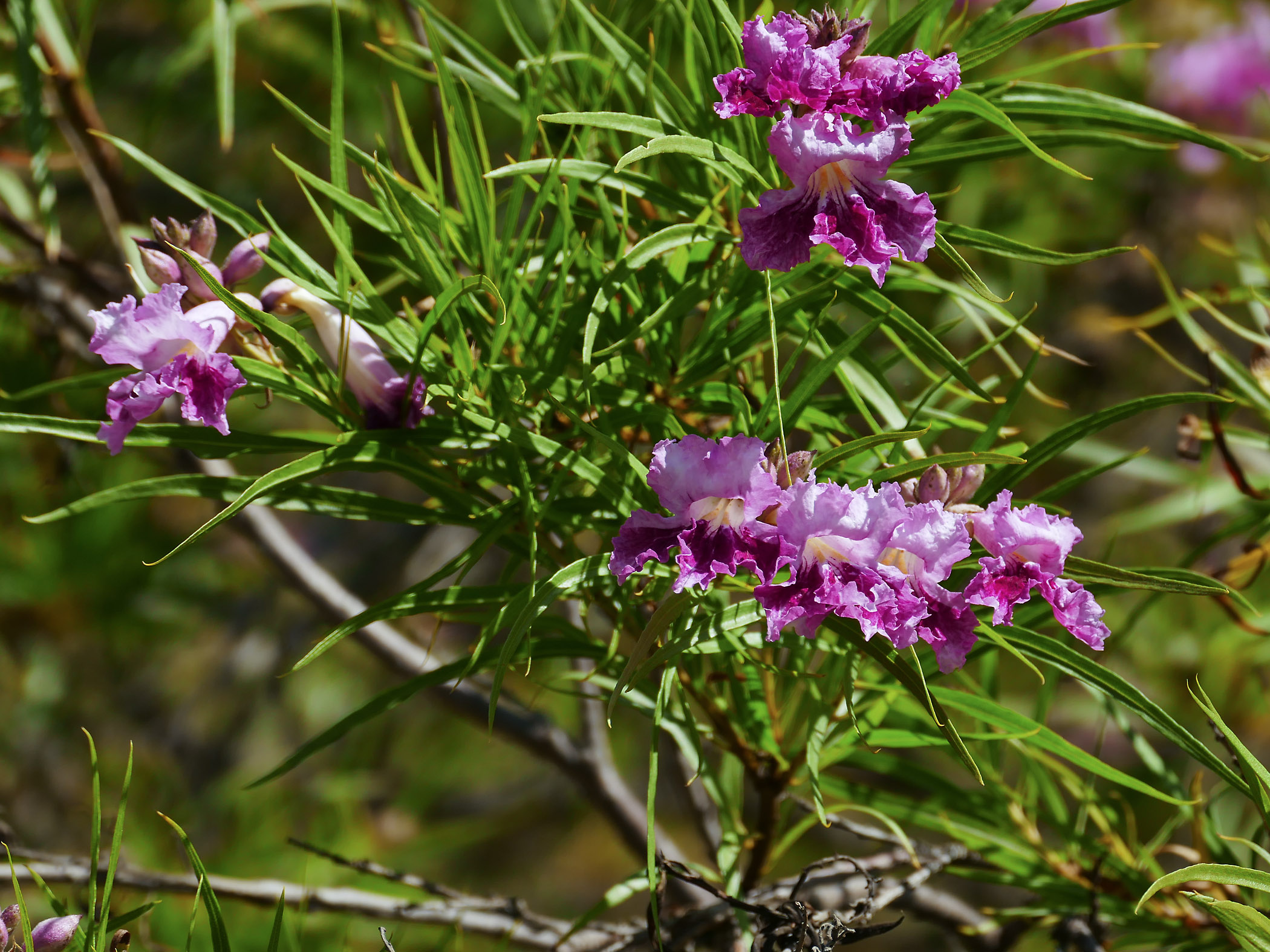
Desert willow (Chilopsis linearis) blooms in May and June. The Garden’s tree was planted in 1961. (Photo: Randy Wright)
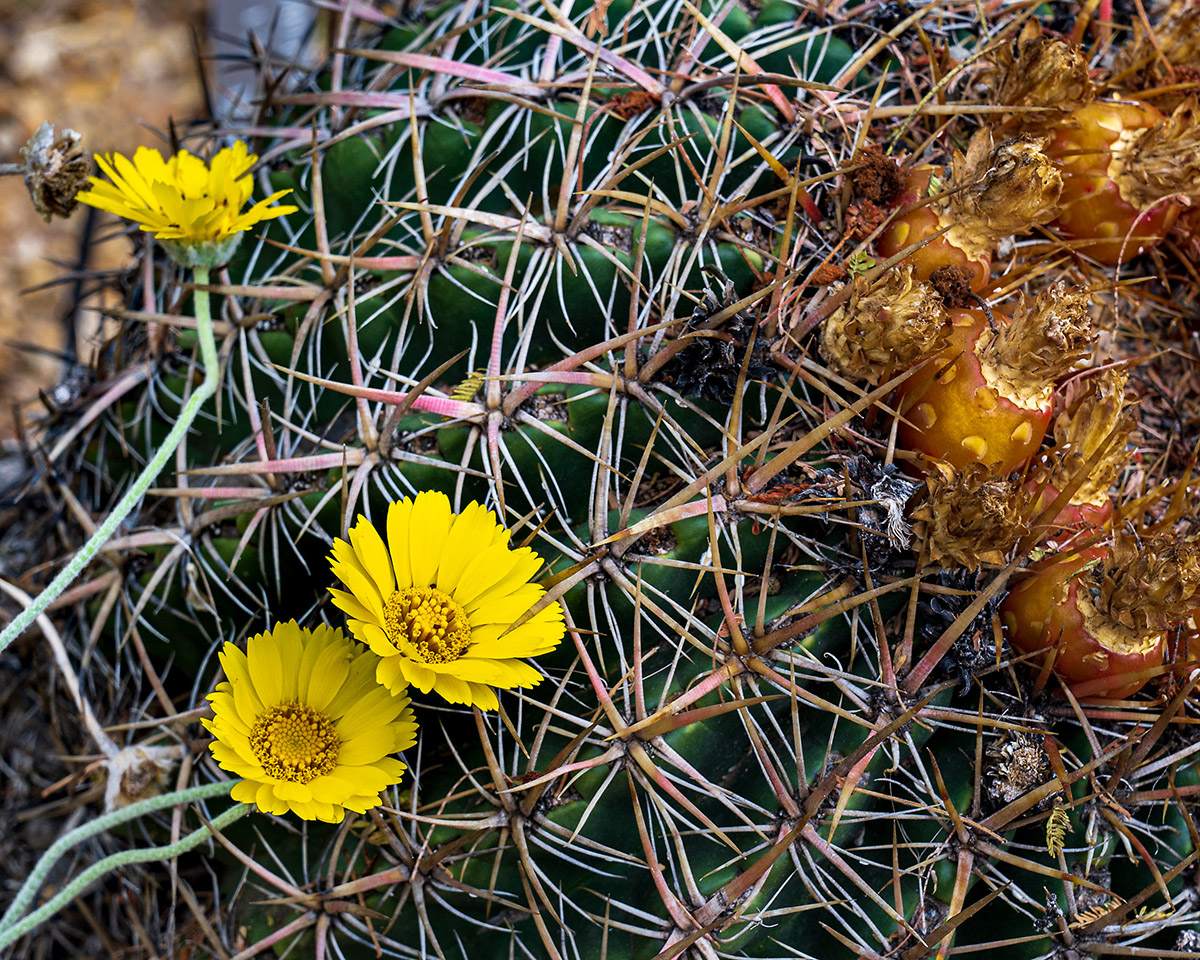
California barrel cactus (Ferocactus cylindraceus) in fruit (right) with desert marigold (Baileya multiradiata). The fleshy fruits of this cactus can contain as many as 30,000 seeds. (Photo: Greg Trainor)
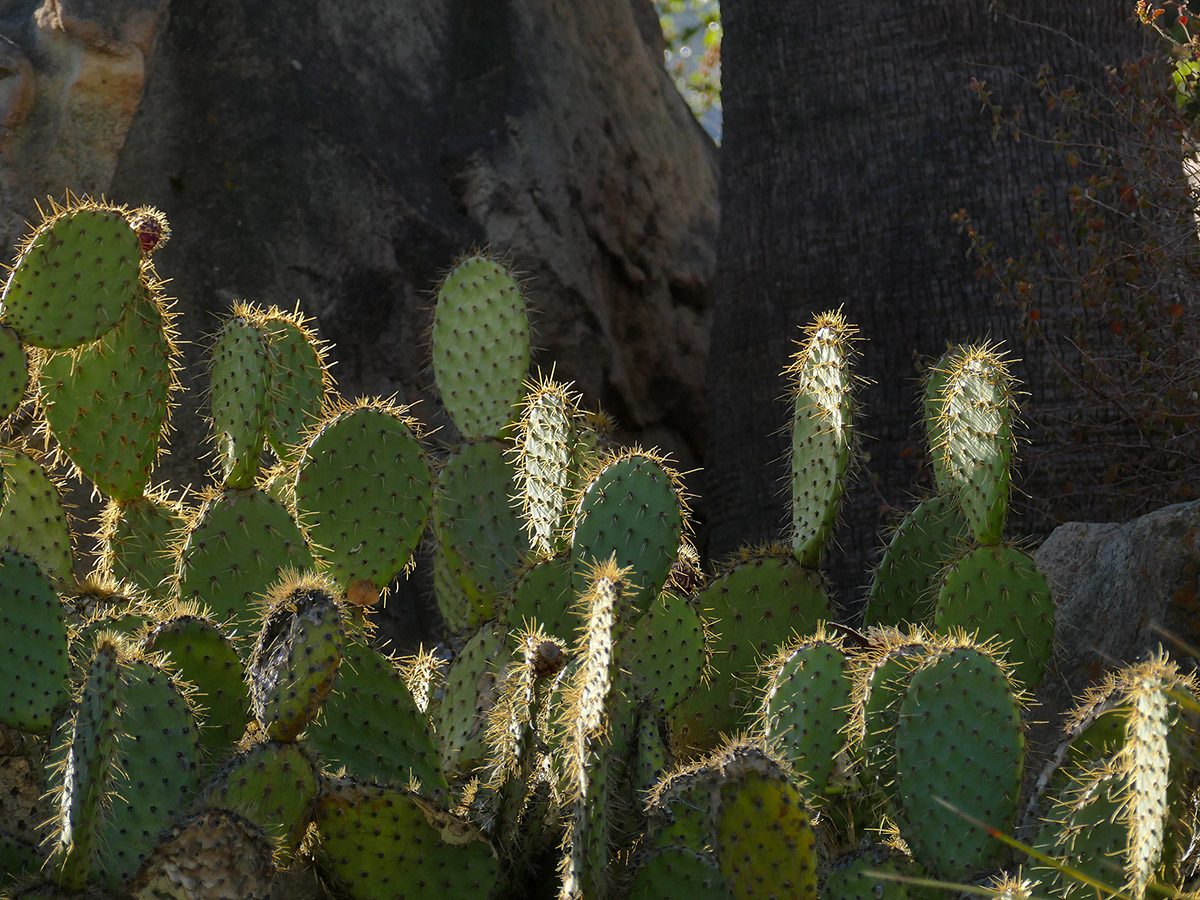
Prickly pear (Opuntia sp.) pads are actually a flattened and fleshy stem. The deep red fruit, called tuna, can be seen atop the pad near the top left of the image. (Photo: Randy Wright)
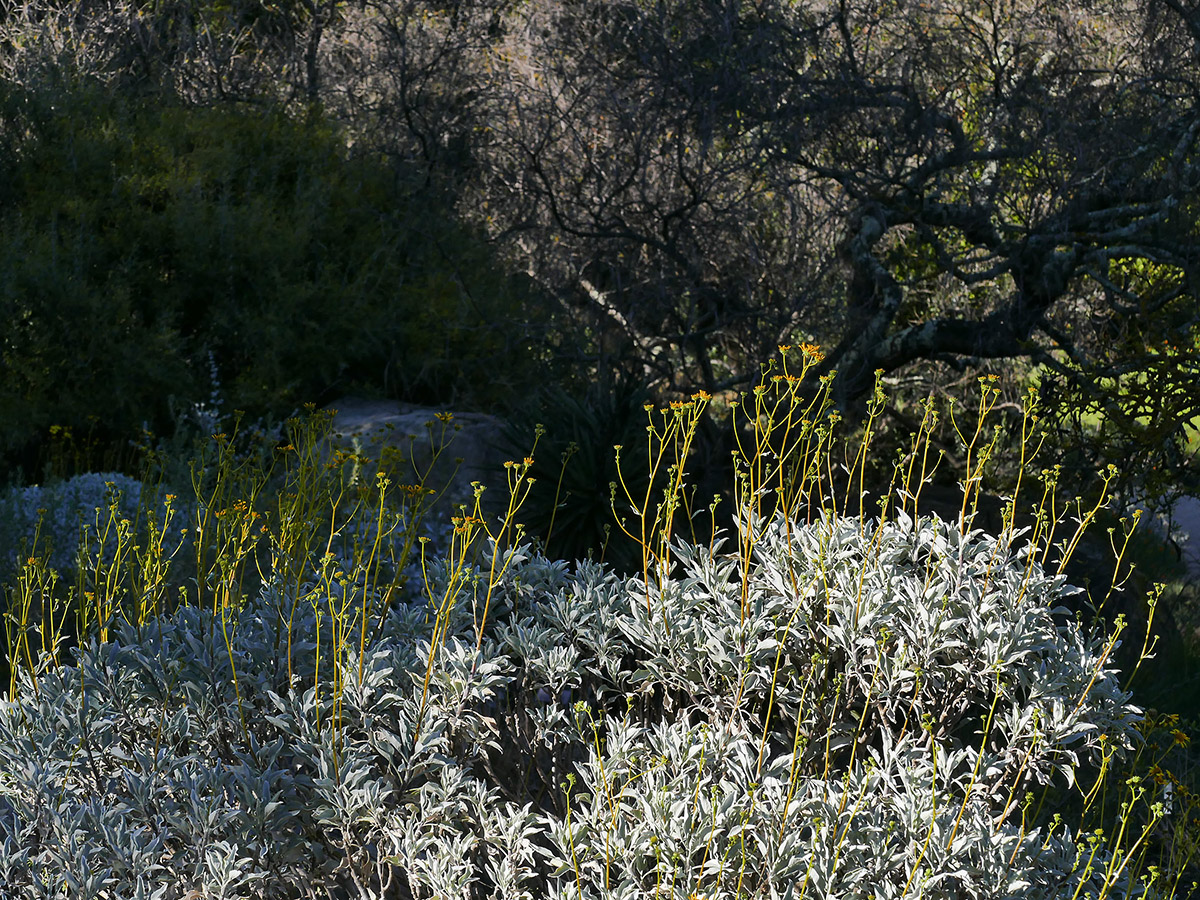
Brittlebush (Encelia farinosa) about to burst into bloom. The silver leaves help the plant conserve water and reflect heat. (Photo: Randy Wright)
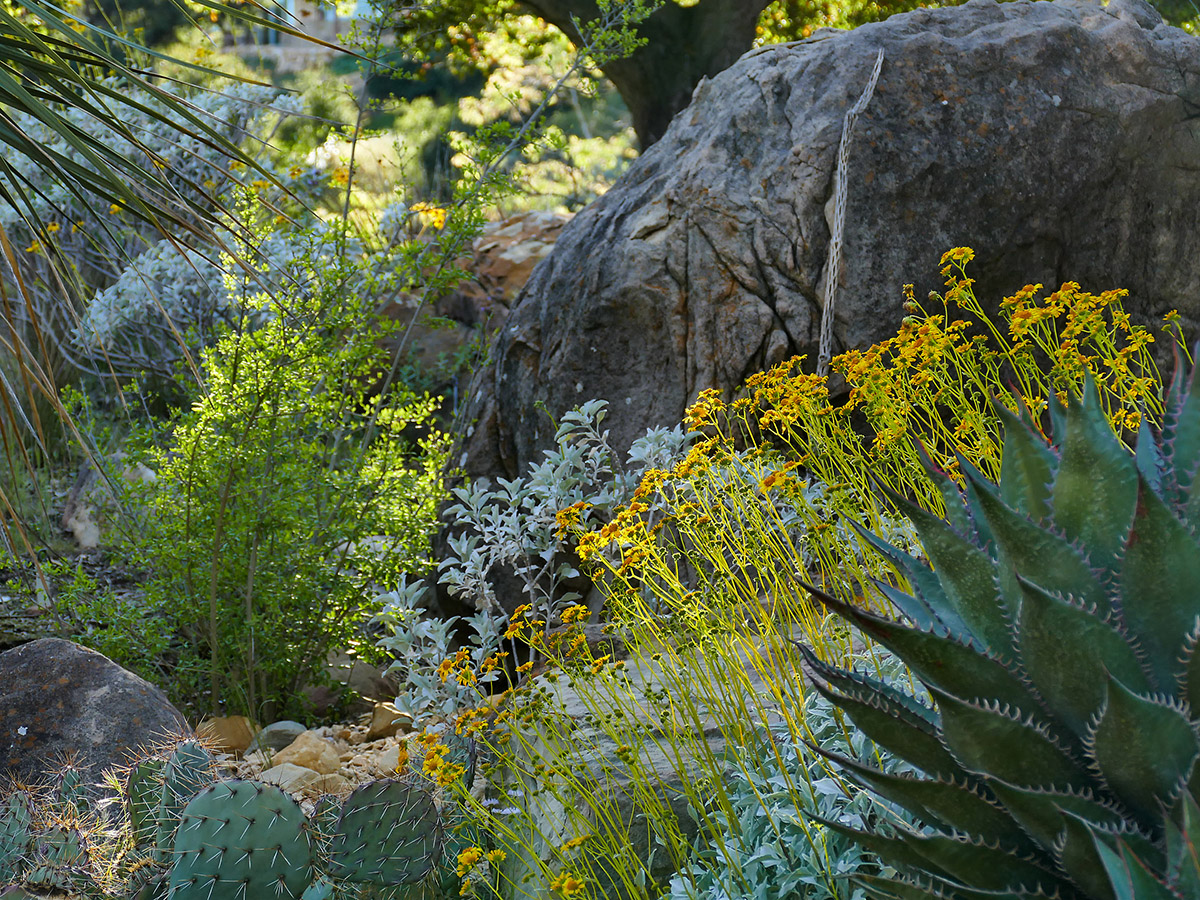
Plants from across the California deserts display a handful the many different adaptations to beat the heat including succulent leaves and stems, pale leaves, and teeny tiny leaves. (Photo: Randy Wright)
 Donate
Donate